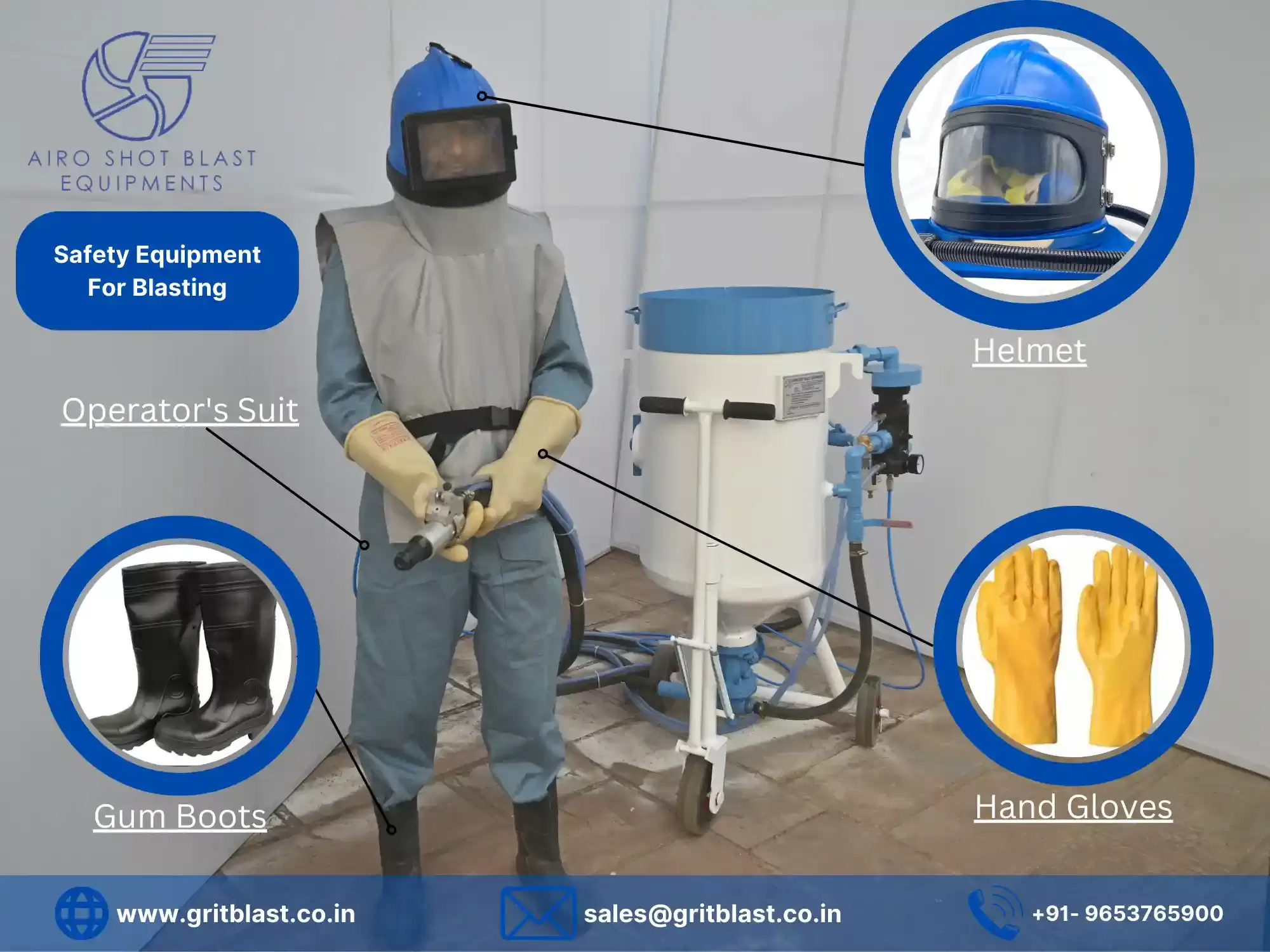Safety equipment for blasting enclosed many types of equipment related to Health, Control, and Safety Hazards. There are many different hazardous situations and conditions created by blast cleaning operations. However, numerous hazards can greatly reduce if not eliminated altogether by applying mown operating and maintenance techniques and engineering controls.
Hazards related to safety equipment not used for blasting
Health Hazards: The three most significant health hazards are those which relate to dust, noise, and chemical.
- Dust: Dust result from broken-down abrasive media, pulverize surface coatings and encrusted substances, and abraded material from the object blasting. Those smaller than 10 microns remain airborne longer and are easily inhaled. Smaller dust particles often settle in the lungs and sometimes small soluble particles dissolve into the bloodstream.
- Noise: Sound levels to which blast operators are exposed are the result of numerous interrelated factors, such as the size and composition of the blasting area, the type of equipment (including areas, neither of which enables easy confinement or control of sand blasting nozzle) involve. With cabinet and automatic room type blasting, the noise problem can be made relatively minor with proper engineering controls.
- Chemical: Although not a direct element of the abrasive blasting process, the blast operator may be called upon to clean a surface particularly an oily surface with a chemical such as trichloroethylene. Improper use or storage of this and similar chemicals can lead to serious health hazards through inhalation of vapors or ingestion or skin absorption of the liquid.
Control Hazards: Controlling the equipment being used for blasting purposes should well planted to avoid controlling hazards.
Safety Hazards: Safety hazards include those associated with the abrasive blasting equipment itself, vision impairment, slipping, flying abrasive, fire, explosion, and static electricity.
Blasting Safety Equipments
Safety Equipment for sand / shot blasting machine consists of equipment like air-fed blasting hood, Blasting Wear, Hand Gloves, climate control device, Air filter, air supplied respiratory mask, gum-boot, etc.
Why The Safety Equipment Necessary For Blasting
Safety equipment is necessary for blasting because of the chemical behavior of abrasive such as steel shots, steel grit, aluminum oxide, copper slag, glass bead, abrasive garnet sand, plastic media, etc. And when abrasive propulsion strike to workpiece it get penetrate from the workpiece. Hence dust particles are anticipated into the environment causing diseases like breathing problems, lung disease, hearing impairment.

